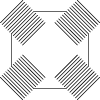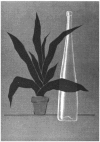Perception and Past Experience 50 Years After Kanizsa's (Im)possible Experiment
- PMID: 31965905
- PMCID: PMC7158373
- DOI: 10.1177/0301006619899005
Perception and Past Experience 50 Years After Kanizsa's (Im)possible Experiment
Abstract
In the revolutionary year 1968, the Institute of Psychology of the University of Trieste directed by Gaetano Kanizsa published a collective volume to celebrate the 70th birthday of Cesare L. Musatti. Kanizsa devoted the opening article to the empirical refutation of an argument developed by Musatti in Structure and experience in perceptual phenomenology. Musatti held that the debate between rationalist and empiricist theories of perception was not scientific, since a crucial experiment on the role of past experience is—in principle—impossible. Besides rejecting his mentor’s argument on logical grounds, Kanizsa produced a parade of visual effects to demonstrate that in several conditions (involving object formation and camouflage, Petter’s rule, phenomenal transparency, shape recognition, motion organization) actual perception violates expectations based on familiarity with specific objects. The empirical refutation of expectations based on past experience was recurrent in Kanizsa’s subsequent production and represents a lively topic of current perceptual science, though Musatti’s smile is still here.
Keywords: Petter’s rule; depth cues; past experience; perceptual organization; phenomenal transparency; shape recognition; stream/bounce effect.
Figures



















Similar articles
-
The relative weight of shape and non-rigid motion cues in object perception: a model of the parameters underlying dynamic object discrimination.J Vis. 2012 Mar 16;12(3):16. doi: 10.1167/12.3.16. J Vis. 2012. PMID: 22427696
-
A Generic Mechanism for Perceptual Organization in the Parietal Cortex.J Neurosci. 2018 Aug 8;38(32):7158-7169. doi: 10.1523/JNEUROSCI.0436-18.2018. Epub 2018 Jul 13. J Neurosci. 2018. PMID: 30006362 Free PMC article.
-
Surface segmentation mechanisms and motion perception.Vision Res. 1993 Feb;33(3):313-28. doi: 10.1016/0042-6989(93)90088-e. Vision Res. 1993. PMID: 8447104
-
The role of familiarity in the recognition of static and dynamic objects.Prog Brain Res. 2006;154:315-25. doi: 10.1016/S0079-6123(06)54017-8. Prog Brain Res. 2006. PMID: 17010720 Review.
-
The perception of form and motion.Curr Opin Neurobiol. 1993 Apr;3(2):177-82. doi: 10.1016/0959-4388(93)90207-f. Curr Opin Neurobiol. 1993. PMID: 8513229 Review.
Cited by
-
μετὰ τὰ ϕυσικά: Vision Far Beyond Physics.Vision (Basel). 2025 Mar 26;9(2):25. doi: 10.3390/vision9020025. Vision (Basel). 2025. PMID: 40265393 Free PMC article. Review.
-
An Unavoidable Mind-Set Reversal: Consciousness in Vision Science.Brain Sci. 2024 Jul 22;14(7):735. doi: 10.3390/brainsci14070735. Brain Sci. 2024. PMID: 39061475 Free PMC article.
References
-
- Adelson E. H., Anandan P. (1990, July 29). Ordinal characteristics of transparency. Paper presented at the AAAI-90 Workshop on Qualitative Vision, Boston, MA.
-
- Anderson B. L. (1997). A theory of illusory lightness and transparency in monocular and binocular images: The role of contour junctions. Perception, 26, 419–453. - PubMed
-
- Enns J. T., Shore D. I. (1997). Separate influences of orientation and lighting in the inverted-face effect. Perception & Psychophysics, 59, 23–31. - PubMed
Publication types
MeSH terms
LinkOut - more resources
Full Text Sources
Miscellaneous

